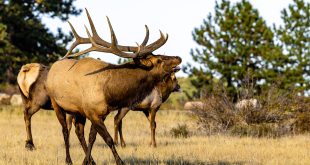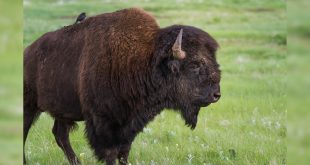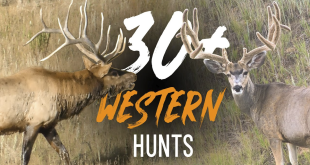The allocation for bighorn sheep, moose and mountain goat is 90% / 10%. There is no set allocation for pronghorn or black bear.
Highlights of what was discussed during the workshop follow.
1st Problem Statement: Allocation
Non-resident Perspective: There is no problem, support the status quo.
Resident Perspective:
- Resident hunters would like to draw more licenses.
- Resident hunters are concerned that non-resident hunters are allocated licenses at a higher rate in Colorado than in other western states.
- The number of preference points it takes to draw a high-point license keeps increasing.
The Commission is considering whether to make Colorado’s allocation system look like other Western states (higher percentages for residents) or allow Colorado to continue to provide the best hunting opportunity to non-residents in the West. And if a change should be made, how much?
They presented an excellent example of tag allocation in an Either Sex Archery deer unit with 1,000 tags. 20% (200 tags) go to landowners right of the top (a statutory requirement, no residency requirement), then another 15% (150 tags) is taken off the top for youths (this pertains to Doe pronghorn, Antlerless elk, and Antlerless & Either Sex deer). Then using the 65% / 35% distribution applicable to most units we’re left with 423 tags for residents and 227 for non-residents. Because this example was Either Sex deer the youth set-aside applies. If it were a different hunt without the youth set-aside the final numbers would have been 520 tags for residents and 280 for non-residents. It’s the relatively low final number of resident tags that have hunters living in Colorado concerned.
Standard hunt units have a 65% / 35% allocation, while high-demand elk & deer units have an 80% / 20% split. Demand is based on 2007-2009 data and frozen there.
Ideas/Considerations:
- Use one standard allocation for elk, deer, pronghorn and bear.
- Update the years (from 2007-2009) used to determine 80/20 high demand allocation.
- Status quo
2nd Problem Statement: Crowding
- Hunters have concerns regarding increasing crowding in OTC elk units.
- Many resident hunters in particular feel that crowding from non-resident hunters in OTC archery elk units has become a major concern.
OTC Advantages include guaranteed tags, flexibility to hunt across multiple GMUs, no qualifying license required, no draw required, hunters can still apply for limited licenses & receive preference points, no differentiation between resident and non-resident.
OTC Disadvantages include crowding which can influence animal distribution, low success rates, contributes to preference point creep, less overall management control, no differentiation between resident and non-resident (also an advantage).
Elk OTC licenses are a big part of Colorado’s license sales but for the most part aren’t offered in other western states, although some variations do exist for residents (WY General elk, Idaho Resident OTC) but not non-residents.
If other western states continue to ratchet back on non-resident opportunities Colorado may become the only game in town, potentially increasing crowding significantly.
Ideas/Considerations:
- Eliminate or cap all OTC licenses for residents and non-residents
- Eliminate or cap OTC licenses only for non-residents
- Status quo
3rd Problem Statement: Preference Points
- The number of Preference Points it takes to draw a high-point license keeps increasing.
- Consequently, predictability for when a hunter will draw a high-point license is decreasing.
Preference points apply to deer, elk, pronghorn, bear, and turkey (weighted preference points used for bighorn sheep, moose and goats but aren’t discussed here).
Preference point creep is real and continuing to get worse, in some units the points required are increasing by 1 (or more) points per year.
For elk; GMU’s 1, 2, 10, 201, 40, 61 and 76 are where the main concerns are for preference points.
Preference Point Banking was discussed (that’s when a hunter with a lot of points can apply for a GMU that requires less points than they have and KEEP their remaining points.) This was tried once in 2006 but increased instability and contributed to point creep for lower point GMUs.
Group Averaging Preference Points was discussed (this is when group applications average points among all members). This could encourage hunters (or non-hunters) to buy points regardless of their intention to hunt, contributing to point creep. It could even lead to commercialization of preference points. But it could also reduce point creep if high point holders begin using their points. It was noted some other states use this system, and they seem to like it.
Hybrid Draw vs Split Draw
Hybrid Draw: In those hunt codes requiring 10 more resident points to draw (based on a 3-year average from 2007-2009), up to 20% of available licenses for deer, elk, pronghorn, and bear may be issued through a random drawing. A minimum of 5 individual points is required to participate. No group applications.
Split Draw: Used by other states. Usually not limited to a certain group of applicants, applies to most or all hunt codes, various quota percentages.
Both systems are good for applicants with lower points but take away opportunity from applicants with high points.
Financial Analysis
This presentation looked at the financial impacts of potential changes. They considered the implications of three changes to license distribution.
- Adjusting non-resident caps.
- Problem Statement (presented previously):
- Resident hunters would like to draw more licenses.
- Resident hunters have concerns that non-resident hunters are allocated licenses at a higher rate in Colorado than in other western states.
- The number of preference points it takes to draw a high-point license keeps increasing.
- Non-resident caps are applied to all deer and elk codes in the draw.
- 35% is the non-resident cap for all hunt codes, except high demand hunt codes (requiring 6+ preference points) when 20% is used.
Numerous scenarios were run, the most expensive was reducing the non-resident cap for deer and elk from 35% to 20% for all hunts. The decrease in revenue was $2,347,000.
When this scenario was run, adding in pronghorn and bear the decrease in revenue was $2,311,000.
- Updating the list of 80/20 high demand, hunt codes.
- deer and elk high demand hunt codes that required 6+ points for a resident to draw are based on a three-year average from 2007-2009.
- These use a 20% non-resident cap instead of 35%.
- This hunt code list has not been updated since 2010.
Numerous scenarios were run, one was to update the hunt code list to 2019-2021, another was to increase the number of qualifying points to 8 or 10, another was to include pronghorn and bear 80/20 hunt codes. These scenarios varied the total revenue by +/- a few 10’s of thousands … nothing significant.
- Limiting OTC archery elk licenses.
- Currently there are 2 OTC archery elk hunt codes.
- Hunters are concerned regarding increased crowding.
Proposals are to limit archery elk OTC licenses, set quotas at 90% or 75% of 2021 sales, and apply a non-resident cap.
Numerous scenarios were run; to include status quo, 10% or 25% reduction, non-resident cap of 35%, 25%, and 20%. These scenarios all resulted in revenue reductions from $2.2 to $5.6 million.
Wrap-up
The Commission will be making decisions within the next 6 months. They discussed and acknowledged some hunters have spent many years and a lot of funds building preference points and that should be considered.
The Way Ahead
There are very few actions that can realistically be taken prior to the 2023 season, but the Commissioners feel they should do something because the residents want change. The Commissioners requested CPW bring the Commission some recommendations for change so they can show movement forward. For 2023, they may only be able to consider updating the 3-year averages to 2019-2021 to better reflect what’s currently happening. In the future they may consider using 80/20 across the board for all 4 species.
 Eastmans' Official Blog | Mule Deer, Antelope, Elk Hunting and Bowhunting Magazine | Eastmans' Hunting Journals
Eastmans' Official Blog | Mule Deer, Antelope, Elk Hunting and Bowhunting Magazine | Eastmans' Hunting Journals






As a Co Resident we have to change to 80/20 across the board and maybe go further in the future. If you are a non resident ask yourself if you would be okay with only getting to hunt a place in your backyard once every 2/3 years for deer? You would lose your mind. We have to look out for residents first like every other western state and then we can sell tags to NR for them to come enjoy as guests… I’d be fine if we raised tag prices as well to make up for lost revenue if it came down to it. Bottom line game in Colorado needs to be managed for Coloradans.